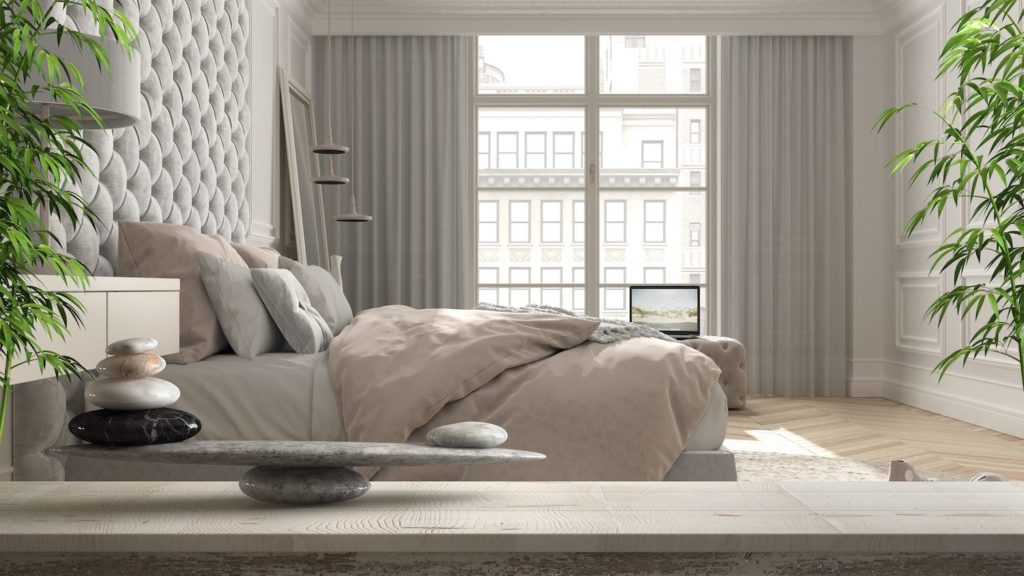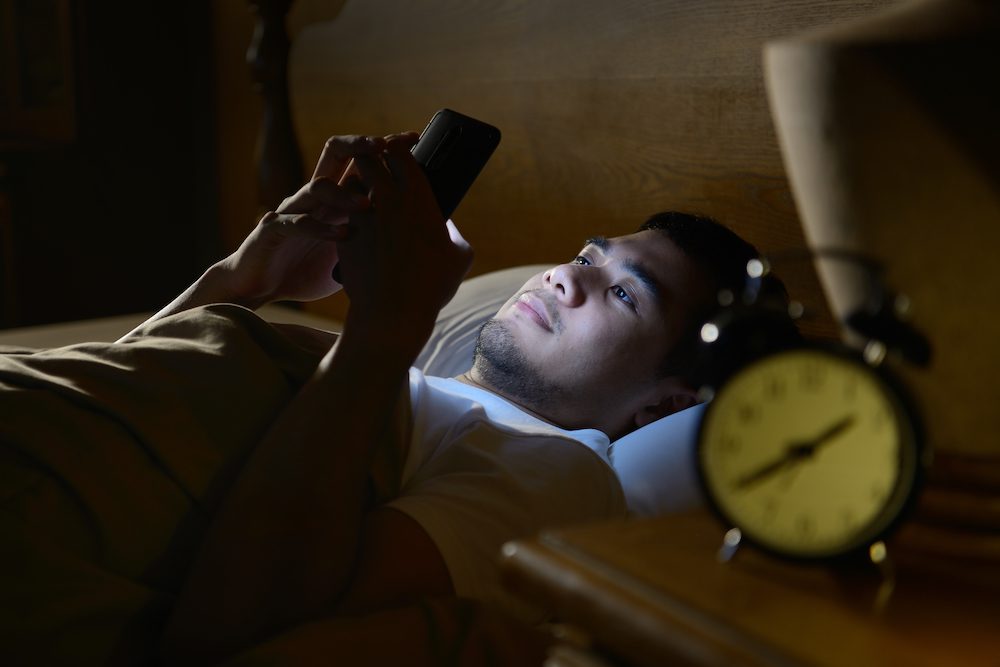If you’re unfamiliar with relaxation techniques, they are simple practices a person can do to help them calm down, cope with stressful situations, relieve stress, and unwind. They can also help you fall asleep, and go to sleep (or back to sleep) faster.
Along with good sleep hygiene and a consistent bedtime, relaxation techniques are an important part of your bedtime routine to ensure that you get the proper rest you need each night.
Whether you’re looking for new ways to help yourself sleep or are new to relaxation techniques in general, I wanted to share some of the best methods that can help you get the deep, restful sleep you deserve each night.
How Relaxation Techniques Reduce Stress
We’ve all had nights where we’ve had less than stellar sleep, so we all know how poor sleep can mess with us the next day. In fact, most American adults don’t get their recommended 7 or more hours of sleep per night. Having a sleep deficit can really add up when it comes to how we feel during the day. Consistently poor sleep or a lack of quality sleep contributes to brain fog, sluggishness, and even increased risk of injury.
In our daily lives, we often feel what’s known as a “stress response” to everyday stressors. These can be anything small like traffic jams or work-related stress or even big stresses like worrying about a sick or injured family member. Stress is a normal part of our lives, but it’s very important to deal with it in a healthy way, especially since it has a cyclical effect on your sleep.
If you’re feeling stressed, you’ll probably have trouble sleeping— but if you’re having trouble sleeping, this can make you feel even more stressed out. It can be a vicious cycle. This is where practicing the right relaxation exercise comes in.
Practicing relaxation techniques encourages a “relaxation response” where with regular practice, you can create a sense of calm for yourself whenever you need it. Some additional benefits of relaxation techniques include:
- Reducing blood pressure
- Improving sleep quality
- Improving mood and reducing anger
- Improving digestive health
- Reducing muscle tension and body aches
6 Great Relaxation Techniques for Amazing Sleep
So now that you know what beneficial effects the right techniques can have on your body, let’s take a look at some techniques that are easy, risk-free, and accessible. These can all be done pretty much anywhere too, so you don’t need to worry about having a dedicated time or place to relax.
1. Self-Hypnosis
If you’re only familiar with hypnosis in popular media or comedy routines, then you’re really missing out on how it can be used to aid relaxation and encourage sleep. Hypnosis is a state of consciousness where someone is intensely focused on an idea or outcome, which can make their brain more receptive to new thoughts or ideas.
Hypnosis or hypnotherapy can be used to treat a number of health problems including anxiety, chronic pain and sleep disturbances. Rather than being hypnotized by a hypnotherapist, with self-hypnosis, you learn to hypnotize yourself through videos or even smartphone apps.
Through self-hypnosis, you’ll induce yourself into a hypnotic state and listen to suggestions that target your particular symptoms or desires. For better sleep, this can involve additional relaxation methods, instructions for sleep hygiene, or even suggestions for new bedtime rituals.
2. Breathing Exercises
I think we’ve all felt the catharsis that a deep healing breath can provide when we’re feeling strung out. A productive breathing exercise can help encourage relaxation, reduce muscle tension, and even lower your heart rate and blood pressure.
One of my favorite breathing techniques is the 4-7-8 Technique. Start by making yourself comfortable— it doesn’t matter if you’re sitting, lying down, or even standing. Then, you want to practice breathing according to this pattern:
- Inhale for 4 seconds
- Hold that breath for 7 seconds
- Slowly exhale for 8 seconds
Repeat this as many times as you need. By practicing deep, diaphragmatic breathing you’re increasing your body’s oxygen levels as well as imitating your breathing patterns as you fall asleep. In doing so, you’re encouraging your body to enter that state of restfulness and get itself ready for sleep.
3. Yoga Nidra
Yoga is not only good exercise, but it’s excellent for practicing mindfulness and allowing us to become more in tune with our bodies and our breathing. yoga nidra, also known as yogic sleep, helps the body relax while the mind is alert and awake. The goal is to achieve a state of being between wakefulness and sleep.
To practice yoga nidra, all you need is a comfortable spot to lie down, and a guided meditation activity, which can be found online or in dedicated apps. Begin by lying face-up in your place of choice and set an intention for that session, such as stress relief, relaxation, etc. Consider your body and notice any tension or sensations you feel. Follow the instruction of the guided meditation, and allow yourself to transition between states of brain wave activity.
One study has shown that yoga nidra can be a very effective supplemental treatment for insomnia. In participants practicing yoga nidra, regular participation improved their sleep quality and reduced their insomnia severity, anxiety symptoms and their stress levels. This improvement even continued 3 months after they began practicing.
Non-sleep deep rest (NSDR) is a relaxation method similar to yoga nidra. Although the goal of NSDR is to achieve the benefits of sleep without entering sleep, it can be a helpful tool to try if you struggle to relax at night.
4. The Power Down Hour
This is one of my favorites. The Power Down Hour allows you to finish your daily to-do’s and help you get ready for sleep an hour before bedtime. This exercise is done in three 20-minute sessions.
- In the first 20 minutes, take care of any simple unfinished tasks. This can include light housework and pet care.
- In the second 20 minutes, do something relaxing like talking with family members, doing an additional relaxation technique, or journaling. Avoid scrolling on your phone though— the blue light on your screen can inhibit your natural melatonin production and make it harder for you to fall asleep.
- In the last 20 minutes, take care of your personal hygiene. Take a warm bath or shower, brush your teeth, et cetera.
Creating consistent and healthy rituals is key to getting a good night’s sleep each night, and setting a specific time each evening to get things done is immensely helpful in making sure everything is taken care of at home and you get to bed on time.
5. Guided Imagery
Guided imagery uses your imagination to engage your senses, reduce stress, and promote good sleep. This simple exercise can be done on your own, or with the help of a therapist or a guided imagery practitioner. Using the link provided earlier in this paragraph will take you to a free, downloadable, guided visualization and progressive muscle relaxation that I created for sleep.
As an example: imagine tasting a chocolate chip cookie fresh from the oven, and how it can affect all your senses. Can you smell the baking cookies as you begin to imagine the sweet taste in your mouth, or the pleasant gooeyness of the chocolate as you bite into it? Did you physically react to the perceived taste of the warm cookie, or its texture? This is guided imagery at work.
Through this technique, you can connect your conscious mind to your unconscious mind and help direct your body and brain towards a desired goal response. Through guided imagery, you can relieve stress, reduce feelings of anxiety, and encourage healthy sleep onset.
6. Progressive Relaxation
Also known as progressive muscle relaxation, this technique allows you to become more familiar with your body and any of the places you may be holding onto stress or tension.
Progressive relaxation involves working with your body in different areas and each muscle group, first by tensing the muscles and then relaxing them. Most people start with their feet and work their way up to the top of the head.
What this does is promote an awareness of how these parts of your body feel when they are tense, as well as when they’re relaxed. With this awareness, you’re much better prepared to address that tension or stress, and release it. So not only is this an effective exercise for physical stress, it’s great for the emotional stress that can keep us awake also.
When to Seek Help
Even if you practice relaxation techniques, it’s possible that you may still experience problems sleeping. If you do, then it’s very important to talk to your doctor or a sleep expert. They can help you get tested for a sleep disorder or any more serious underlying conditions.
It’s vital to seek treatment for any ongoing sleep problem, especially if you’re at risk for a sleep disorder like insomnia or obstructive sleep apnea (OSA).
A little relaxation goes a long way when it comes to relieving stress and helping your body and mind feel more at ease as bedtime approaches. I hope you’ll give some of these techniques a try— you might be surprised at how well the right technique will work for you!
References
Ask the Sleep Doctor
Have questions about sleep? Submit them here! We use your questions to help us decide topics for future articles, videos, and newsletters. We try to answer as many questions as possible. You can also send us an email. Please note, we cannot provide specific medical advice, and always recommend you contact your doctor for any medical matters.









